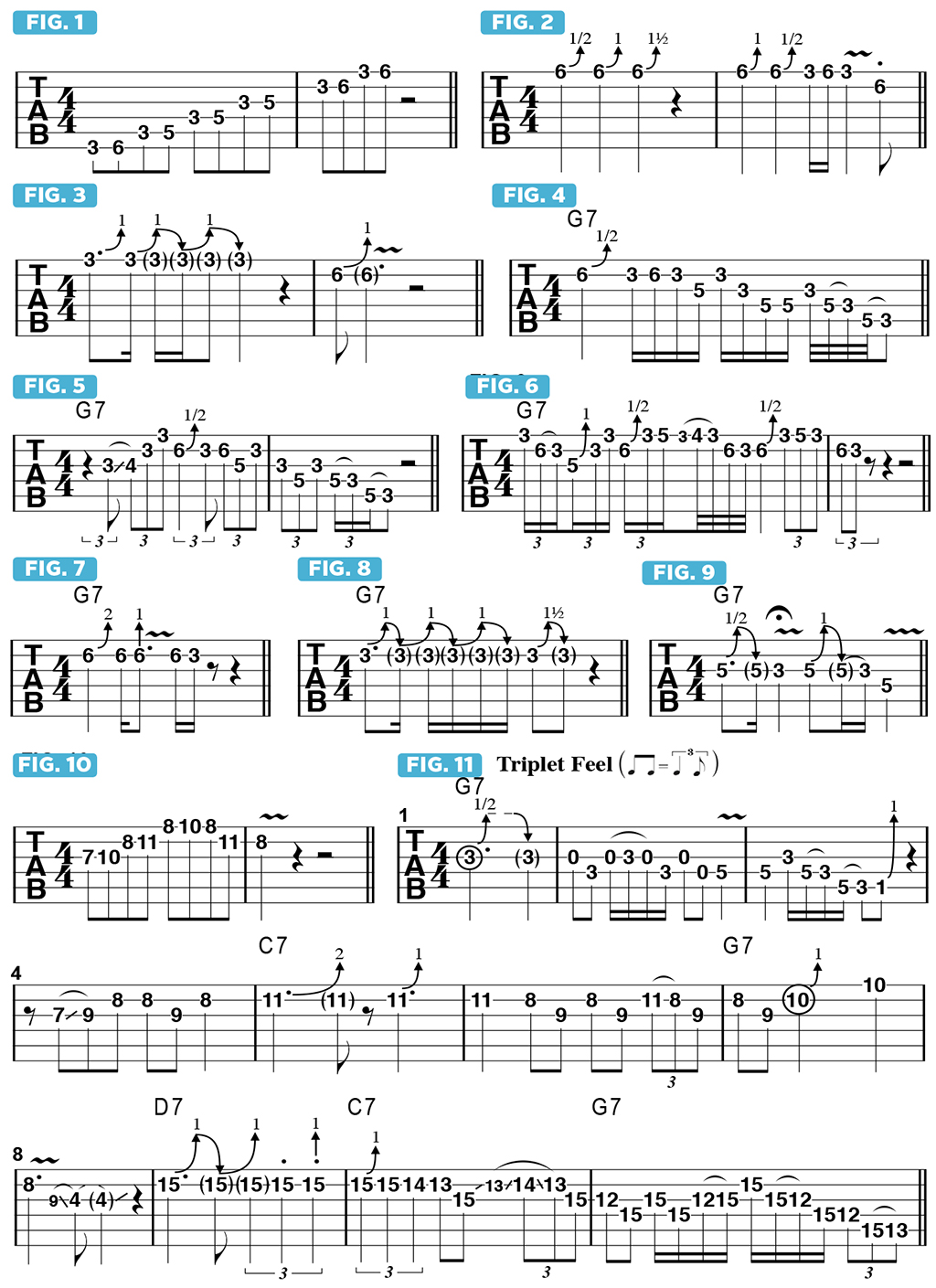Deepen the impact and feel of your solos by string-bending across the fretboard
Learn these techniques to really make your guitar sing
Essential to every serious electric guitar player who plays blues, rock, country, and even jazz is a thorough study of string-bending and finger-vibrato techniques. These cornerstone elements of single-note melody playing afford players the ability to emulate the sound of the human voice and deepen the impact and feeling in their solos.
As has been often discussed, the greatest guitar players in all genres, such as Django Reinhardt and Charlie Christian in jazz, Albert King and B.B. King in blues, and Jimi Hendrix and Jeff Beck in rock, are all absolute masters of bending and vibrato.
In the past few columns, we’ve examined bending each string in varying increments, from a half step, to a whole step, to one and a half steps, to two whole steps and beyond. Half- and whole-step bends are used most often, but there’s great value in getting the feel of wider pitch bends under your fingers.
FIGURE 1 illustrates the G minor pentatonic scale (G, Bb, C, D, F) played in 3rd position. Let’s begin by looking at different string bending techniques, as applied to the top three strings. In FIGURE 2, we start with a half-step bend from Bb, the minor third of G, which raises the pitch to B natural, the major 3rd.
We then bend the Bb note up a whole step, to C, then one and one half steps, to Db. In FIGURE 3, whole-step bends and releases are applied to the G root on the high E string’s 3rd fret, followed by a whole-step bend at the 6th fret on the B string, from F, the minor, or “flatted,” 7th up to G.
FIGURE 4 presents a typical blues-rock lead lick that begins with a half-step bend. The legendary Stevie Ray Vaughan used half-step bending techniques masterfully, and FIGURES 5 and 6 illustrate two licks played in his style: in FIGURE 5, the half-step bend from F on the B string lends a subtle emotional feel to the line, while the same bend in FIGURE 6 serves to set up the move from F to the subsequent G note above it.
Jimi Hendrix would often bend the flatted 7th up a whopping two whole steps, to the 9th, in this case from F to A, and FIGURE 7 offers an example of this in the key of G utilizing a two-step bend followed by a whole-step bend to the G root. Hendrix also liked to bend the 5th with his index finger in this minor pentatonic “box” pattern. FIGURE 8 shows D, the 5th of G, bent and released in increments of a whole step and one and one half steps.
All the latest guitar news, interviews, lessons, reviews, deals and more, direct to your inbox!
In FIGURE 9, half- and whole-step bends are moved over to the G string while staying within G minor pentatonic. The next step is to apply all of these bends to the next higher box position of the scale, as demonstrated in FIGURE 10. FIGURE 11 offers a solo utilizing these techniques over a fast 12-bar blues progression, along the lines of the standard tune Steppin’ Out.
Be sure to check out Eric Clapton’s classic 1966 version of this song, as recorded with John Mayall on the Blues Breakers with Eric Clapton album.
Guitar World Associate Editor Andy Aledort is recognized worldwide for his vast contributions to guitar instruction, via his many best-selling instructional DVDs, transcription books and online lessons.
Guitar World Associate Editor Andy Aledort is recognized worldwide for his vast contributions to guitar instruction, via his many best-selling instructional DVDs, transcription books and online lessons. Andy is a regular contributor to Guitar World and Truefire, and has toured with Dickey Betts of the Allman Brothers, as well as participating in several Jimi Hendrix Tribute Tours.


